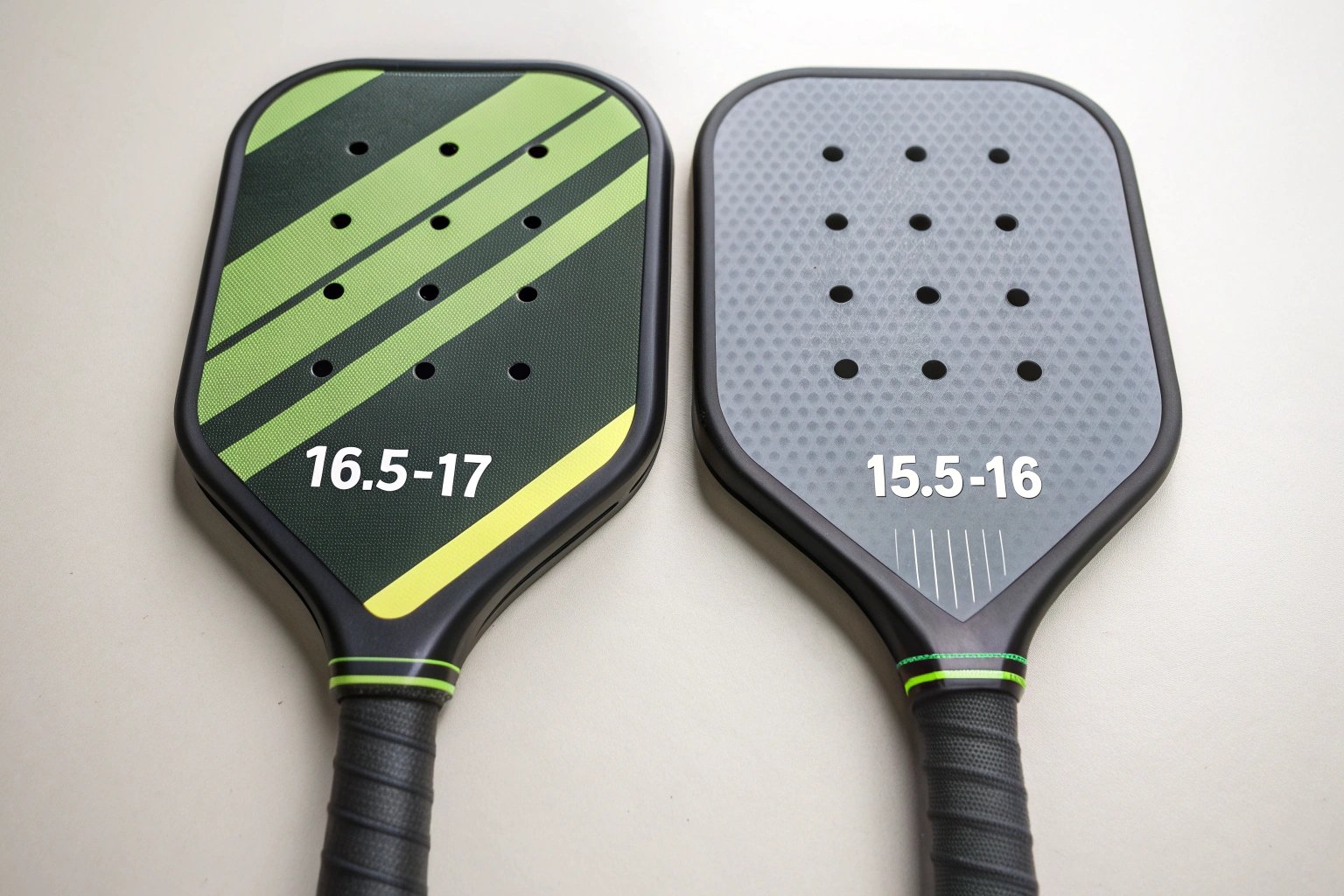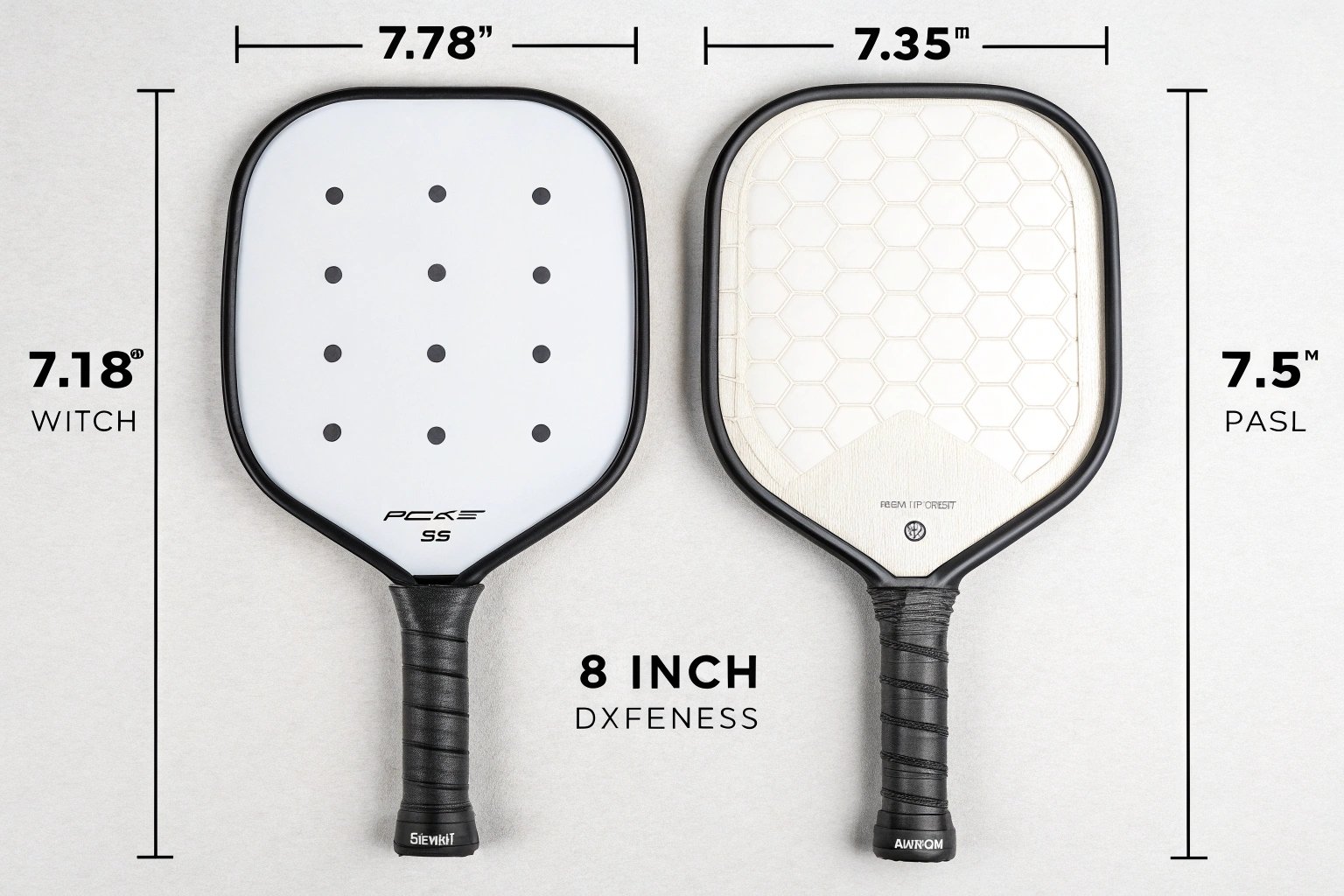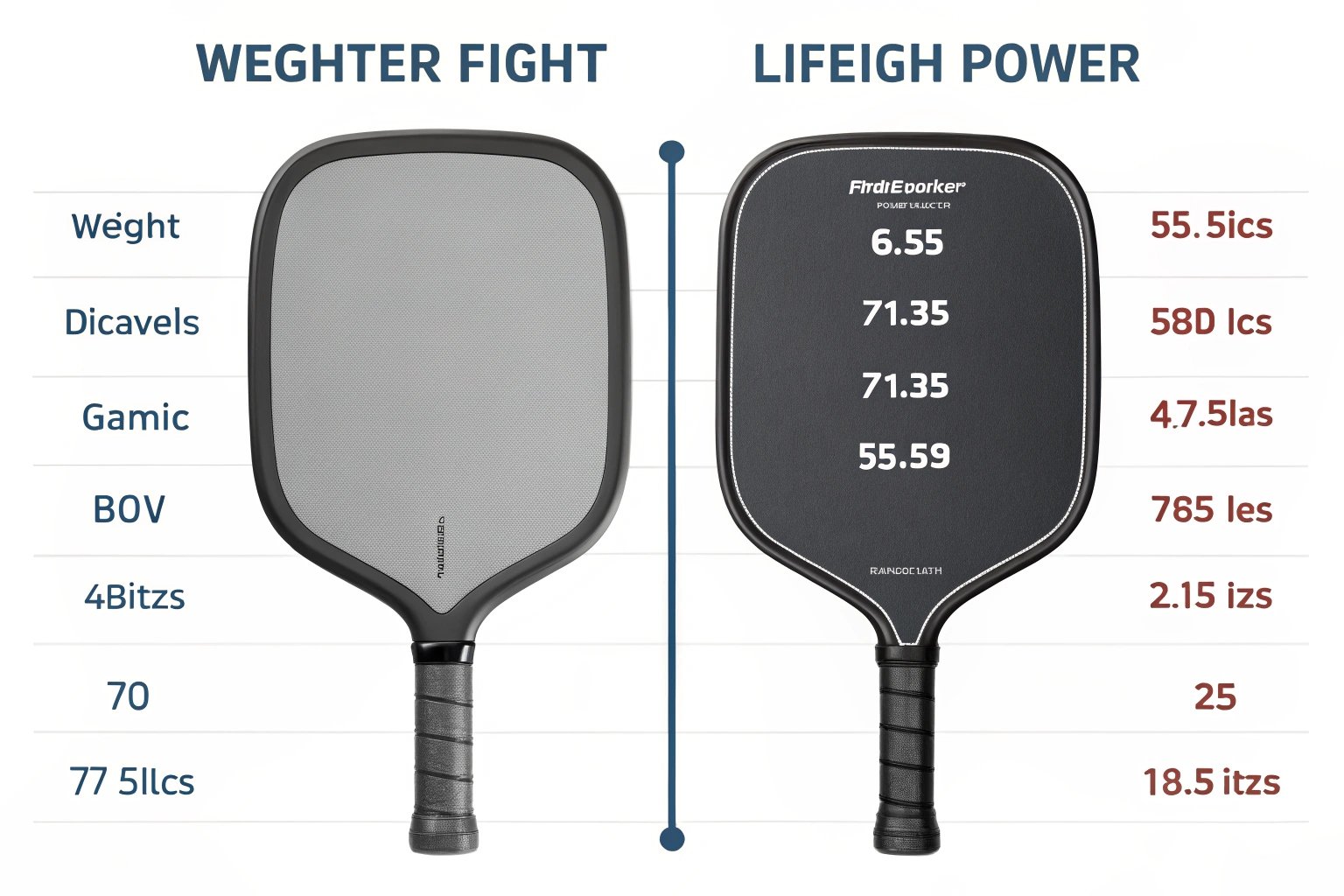Pickleball paddles are integral to the game, but not all paddles are created equal. Are all pickleball paddles the same size? Let's dive into the different paddle sizes, how they affect gameplay, and the craftsmanship that goes into making these paddles.

No, all pickleball paddles are not the same size. The materials, size, shape, and construction techniques vary, making a significant impact on the paddle's performance, feel, and durability.
When choosing a pickleball paddle, it’s important to consider not just the size but the materials and craftsmanship behind it. Let’s break down the factors that influence paddle performance and the craftsmanship that goes into their construction.
What Are the Standard Dimensions for a Pickleball Paddle?
Pickleball paddles generally follow certain size guidelines, but there’s still room for customization depending on the manufacturer and player preference. Understanding the standard dimensions can help guide your selection.
The typical length for a pickleball paddle ranges from 15.5 to 17 inches, with a width of 7.5 to 8 inches. The thickness is usually between 0.4 to 0.6 inches.
Most pickleball paddles are designed within a standard range of 15.5 to 17 inches in total length, including the handle. The width generally falls between 7.5 and 8 inches, and the thickness usually varies from 0.4 to 0.6 inches. These dimensions offer a balanced combination of power, control, and comfort, which suits the majority of players. While these sizes are common, some paddles may vary slightly depending on their material or intended use, with each modification affecting how the paddle performs.
How Does Paddle Length Affect Play?
The length of the paddle can drastically change how you handle the ball. Whether you prefer a longer paddle for extended reach or a shorter one for precision, the length affects your style and performance.
Longer paddles (16.5 to 17 inches) offer extended reach and more power, while shorter paddles (15.5 to 16 inches) improve control and quick reactions.

Longer paddles give you additional reach, making them perfect for players who want to cover more of the court, especially when playing at the net. These paddles offer better power and are ideal for those who focus on aggressive shots like smashes and powerful volleys. However, longer paddles can be more challenging to control, especially when reacting quickly to fast shots.
On the other hand, shorter paddles are favored for their superior maneuverability. They allow quicker wrist movements, making them ideal for precision shots and fast exchanges. These paddles are perfect for players who rely on control and finesse over power. Shorter paddles typically feel lighter and more responsive, helping players stay agile on the court.
How Does Paddle Width Impact the Sweet Spot?
Paddle width influences the sweet spot, which is the area on the paddle that provides the best ball contact. The larger the sweet spot, the more forgiving the paddle is on off-center hits.
Wider paddles (8 inches) provide a larger sweet spot, making them forgiving for beginners, while narrower paddles (7.5 inches) provide better precision for advanced players.

A wider paddle provides a larger sweet spot, making it easier to get a solid hit even when the ball doesn’t hit the center of the paddle. This makes it ideal for beginners or recreational players who are still refining their skills. The larger sweet spot increases forgiveness, helping you maintain accuracy and power despite off-center hits.
Narrower paddles, though less forgiving, offer better precision, which is why advanced players often prefer them. The smaller sweet spot requires better accuracy, but it allows for greater control and spin, making it ideal for players who focus on technique and finesse.
How Does Paddle Thickness Affect Performance?
The thickness of the paddle also plays a significant role in performance. While thickness may seem like a minor detail, it influences both the feel and effectiveness of the paddle.
Thicker paddles provide more power and stability, while thinner paddles are lighter and offer more control.
Thicker paddles, usually in the 0.5 to 0.6-inch range, tend to offer more power. The added thickness provides greater mass behind each shot, making it easier to hit the ball with force. However, thicker paddles can also be less responsive, especially in fast-paced games where quick adjustments are necessary.
On the other hand, thinner paddles are more responsive and lighter. They offer better control, making them ideal for players who rely on quick wrist movements and precise shot placement. Thinner paddles also tend to provide better feel and touch, helping players who favor finesse over power.
The Impact of Paddle Shape on Size
The shape of a pickleball paddle isn’t just about aesthetics—it has a significant impact on how the paddle performs.
Traditional paddles are wider with a larger sweet spot, while elongated paddles are narrower and offer extended reach for powerful shots.
Traditional paddles are generally wider, which gives them a larger sweet spot and makes them more forgiving. These paddles are great for beginners who need more surface area to hit the ball consistently. The larger sweet spot helps with accuracy and power, making it easier for players to get the ball over the net.
Elongated paddles, however, are longer and narrower, providing extra reach and a larger surface area for smashes and deep shots. These paddles tend to have a smaller sweet spot, requiring greater precision but allowing for more power. They are preferred by advanced players who are comfortable with the trade-off between power and control.
How Does Paddle Weight Influence Its Size?
While paddle weight and size are not the same, they are often closely related. A heavier paddle tends to be larger, and a lighter paddle may be smaller.
Lighter paddles are smaller, making them easier to maneuver, while heavier paddles are larger and help generate more power.

Weight plays a crucial role in how the paddle feels and performs. Lighter paddles, usually between 6 and 7.5 ounces, are smaller and easier to handle. These paddles allow for quicker movements and more precise shots, making them ideal for players who focus on control, finesse, and speed.
Heavier paddles, typically between 7.5 and 9 ounces, tend to be larger and provide more power. The added weight helps generate more force with each hit, which is ideal for players who focus on aggressive play. However, these paddles can be more challenging to maneuver, especially for quick reactions.
The Craftsmanship Behind Paddle Construction
The materials and construction methods used to make pickleball paddles are just as important as their size. High-quality paddles often combine advanced materials, such as fiberglass, carbon fiber, and polymer cores, to provide a balance of power, control, and durability.
Modern paddles use materials like carbon fiber and fiberglass, which offer strength, lightness, and increased control.
The construction of the paddle plays a major role in its overall performance. For example, carbon fiber paddles are strong yet lightweight, providing a powerful shot with a quick response time. Fiberglass paddles are slightly more flexible, allowing for better control and spin. Composite paddles often use a honeycomb core made from polymer or Nomex, which adds strength while maintaining a lighter weight. These materials help reduce vibrations and improve comfort during play, making composite paddles the choice of most professional players.
The construction quality also affects the paddle’s durability. High-end paddles are engineered for extended use, ensuring that the materials hold up under pressure, even with frequent play.
Conclusion
Not all pickleball paddles are the same size, and each variation impacts how you play the game. Understanding the influence of paddle size, shape, weight, and materials can help you choose the right paddle based on your preferences and playing style. Whether you're a beginner or an advanced player, there’s a paddle out there designed to enhance your game.